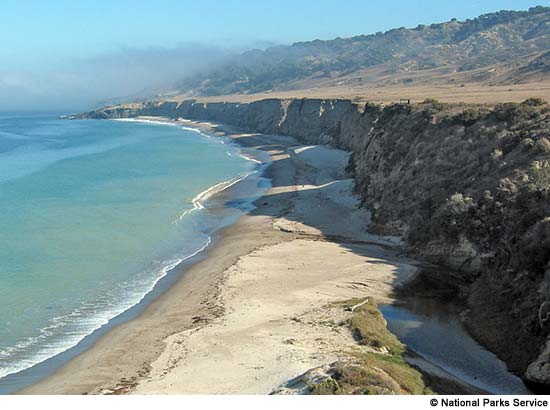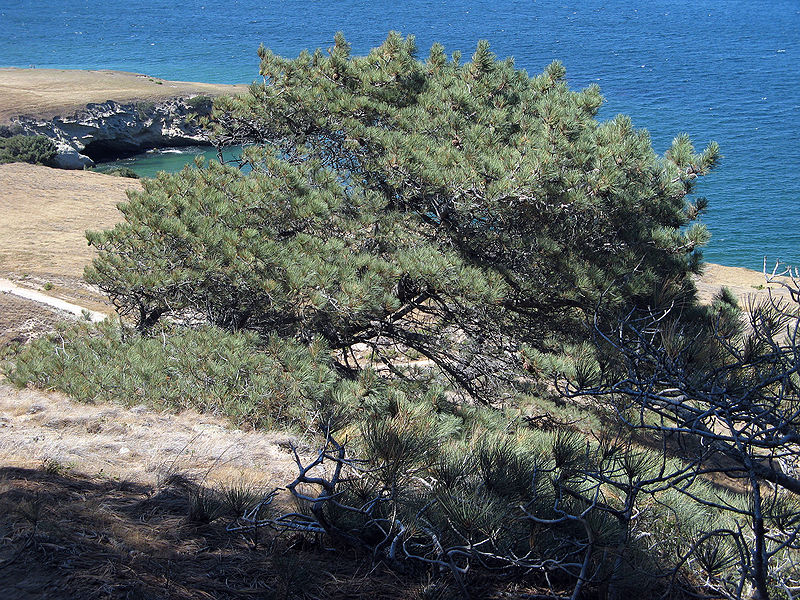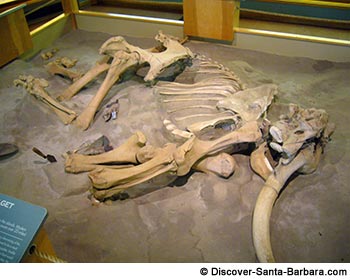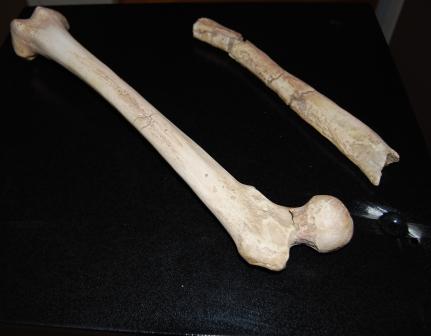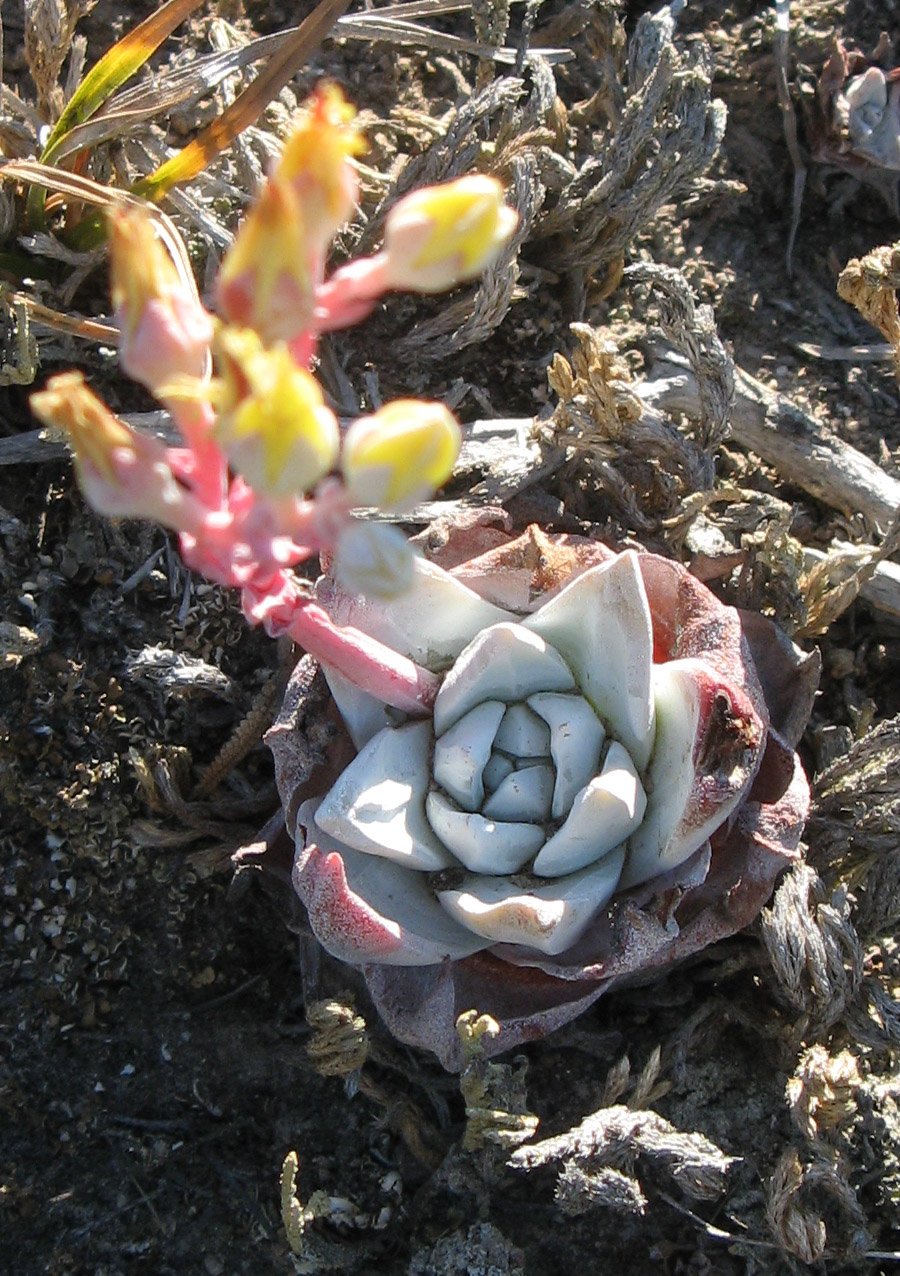Santa Rosa Island, home to the world’s most complete pygmy mammoth remains, the oldest human skeleton in North America, and the rarest pine tree species in the United States, has a fascinating history of human occupation. It was inhabited by the first peoples who entered the American continent during the final glacial episodes of the late Pleistocene period, it was home to the Chumash Indians for over 10,000 years, and Juan Rodriguez Cabrillo claimed it for the King of Spain during his expedition along the coast of Southern California in 1542-1543.
“Island Chumash society was vulnerable to both diseases and economic changes introduced by European contact, and as a result, their numbers greatly diminished. In 1805, Fr. Estevan Tapis of Mission Santa Barbara proposed moving the remaining Santa Rosa Islanders from their seven occupied rancherias to a mission on neighboring Santa Cruz Island in order to ‘bring the Gospel to the inhabitants of the Channel Islands.’ The island mission was never built, and by the end of the second decade of the 19th century, the last of the island Chumash had moved to mainland missions to learn new ways of animal husbandry and agriculture…
…With Mexico’s successful revolt against Spain in 1821, unoccupied Santa Rosa Island became subject to the Mexican flag, and 22 years later with the Treaty of Guadalupe Hidalgo to its first private owner, the Carrillo brothers. On October 3, 1843, Governor Manuel Micheltorena, 13th and penultimate Mexican governor of Alta California, authorized the granting of Santa Rosa Island to these influential and socially prominent brothers who in turn assigned their rights to two of Carlos Carrillo’s daughters. Their husbands and business partners, John C. Jones and Alpheus B. Thompson, developed the island’s first ranching. In 1859 the island saw the dissolution of the acrimonious Thompson-Jones partnership with a fractional sale to the T. Wallace More family”.
The American Civil War created a large demand for wool, and the More family used Santa Rosa Island to raise sheep, an enterprise that lasted for nearly 40 years. In 1901, heirs of the More family sold part of the More ranch to Walter L. Vail and J. V. Vickers who promptly stocked it with 1,891 yearling cattle. By 1930, the Vail & Vickers Company of Santa Barbara owned the entire island and used it for cattle ranching and as a private hunting reserve—a trophy hunting operation based on the importation of non-native Roosevelt elk and Rocky Mountain mule deer.
“In 1980, Santa Rosa Island was included within Channel Islands National Park over the objections of Vail & Vickers, which then successfully lobbied to have the legislation stipulate that purchase of their land would be the highest priority of the Channel Islands National Park. Vail & Vickers, under threat of condemnation and planned government appraisals, sold the island in 1986 for the appraised value of nearly $30 million, which worked out to around $550 per acre. The initial agreement allowed continuation of the ranching and hunting operation for 25 years via a series of five-year renewable special use permits issued by the National Park Service. A lawsuit by the National Parks Conservation Association in 1996 resulted in a court-approved settlement agreement which included removal of all cattle from the island and phased reduction by Vail & Vickers of the non-native deer and elk by 2011” (source).
“In 2006, U.S. Representative Duncan Hunter (R-CA) introduced a provision into the annual defense policy bill that would allow disabled veterans to continue hunting elk on the island past 2011, without the consent of Vail & Vickers or the National Park Service. The provision stayed in the bill and was signed into law by President George W. Bush. This legislation was repealed by the next Congress as part of the FY 2007 Omnibus appropriations bill, also signed into law by President George W. Bush” (Ibid.) A rather more bizarre suggestion for use of Santa Rosa Island was put forward by Douglas Hughes, an unsuccessful GOP California governor candidate in 2010: “As governor I will introduce legislation to impose mandatory expulsion of convicted pedophiles from the State of California as a condition of release from prison…Most say pedophiles cannot be treated or cured and for that reason I will put them on the ‘Island,’ a place where a male sexual offender may choose to live out his life away from children…Santa Rosa Island is the island that will be used as a ‘Pedophile Island’” (source).
Vail & Vickers’ lease expires at the end of the year, by which time all deer and elk on the island will have been removed by private and/or contracted hunters. In a recent statement, the National Parks Conservation Association said “the former owners are working together with the National Park Service to meet requirements to eliminate the deer and elk by the end of December 31, 2011…They are committed to removing as many of the remaining deer and elk as is feasible.” Native plants (including at least eight endangered plant species) have already started a resurgence that park spokeswoman Yvonne Menard called dramatic. Perhaps more significantly than the ecological impacts, however, is that the presence of deer and elk and the annual hunts effectively shut off 90 percent of Santa Rosa Island for visitors for five months out of the every year. And that’s a big reason as to why the park always wanted them removed. “Hunting is not authorized in national parks,” said Menard. “National parks are set aside to preserve the natural environment. The impacts of nonnative deer and elk are known to have impacts on visitors as well as on natural and cultural resources” (source).
The U.S. Fish and Wildlife Service is the principal federal partner responsible for administering the Endangered Species Act, and, as such, uses its authority to conserve threatened and endangered species and, in consultation with the National Park Service, to ensure that their actions do not jeopardize listed species or destroy or adversely modify critical habitat. It’s obviously too late to help pygmy mammoths and who knows what other species which have gone extinct, but the addition of Santa Rosa Island to the Channel Islands National Park might save its rare plants and animals for future generations to appreciate. “The isolation of the islands have made them natural laboratories of evolutionary extravagance, as seen not only in the pygmy mammoth, but also in the extinct giant mouse, the diminutive island fox, the munchkin dudleya, and the giant, bright blue Island Jay. Isolated from their mainland relations and exposed to unique environmental conditions, the ancestors of these plants and animals, along with over 70 others, responded by becoming new species unique to the island – found nowhere else on earth” (source).
Article by Bill Norrington


